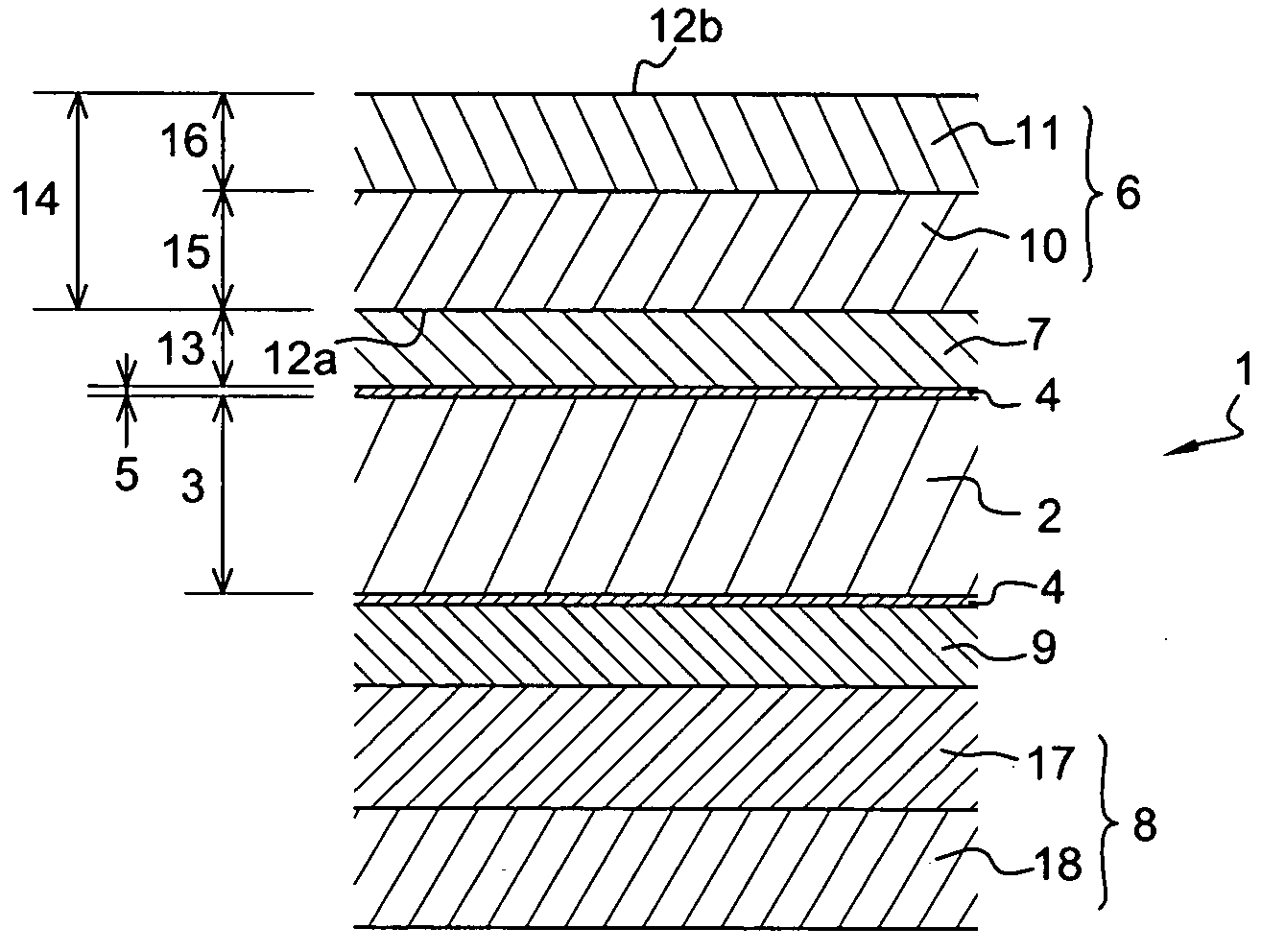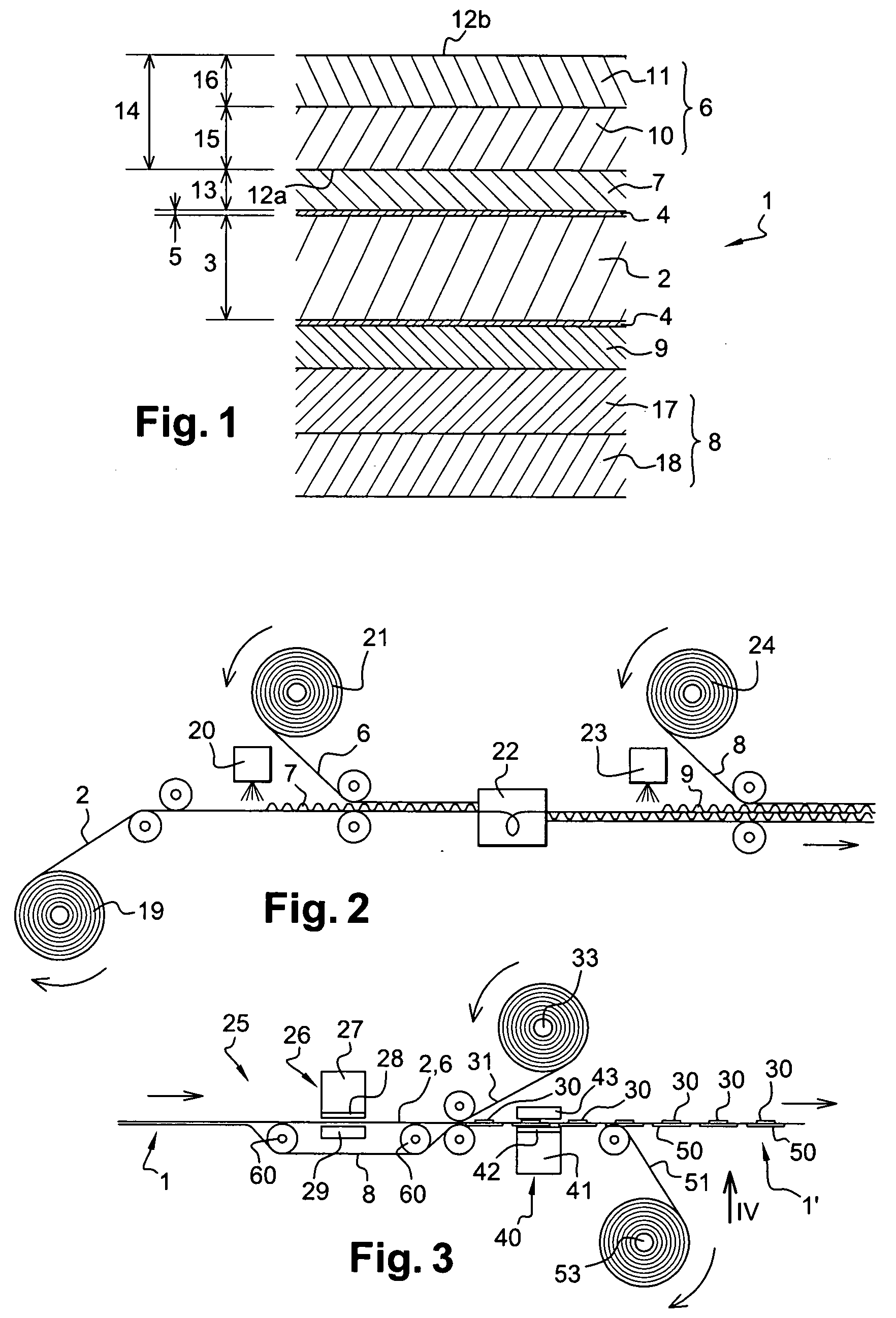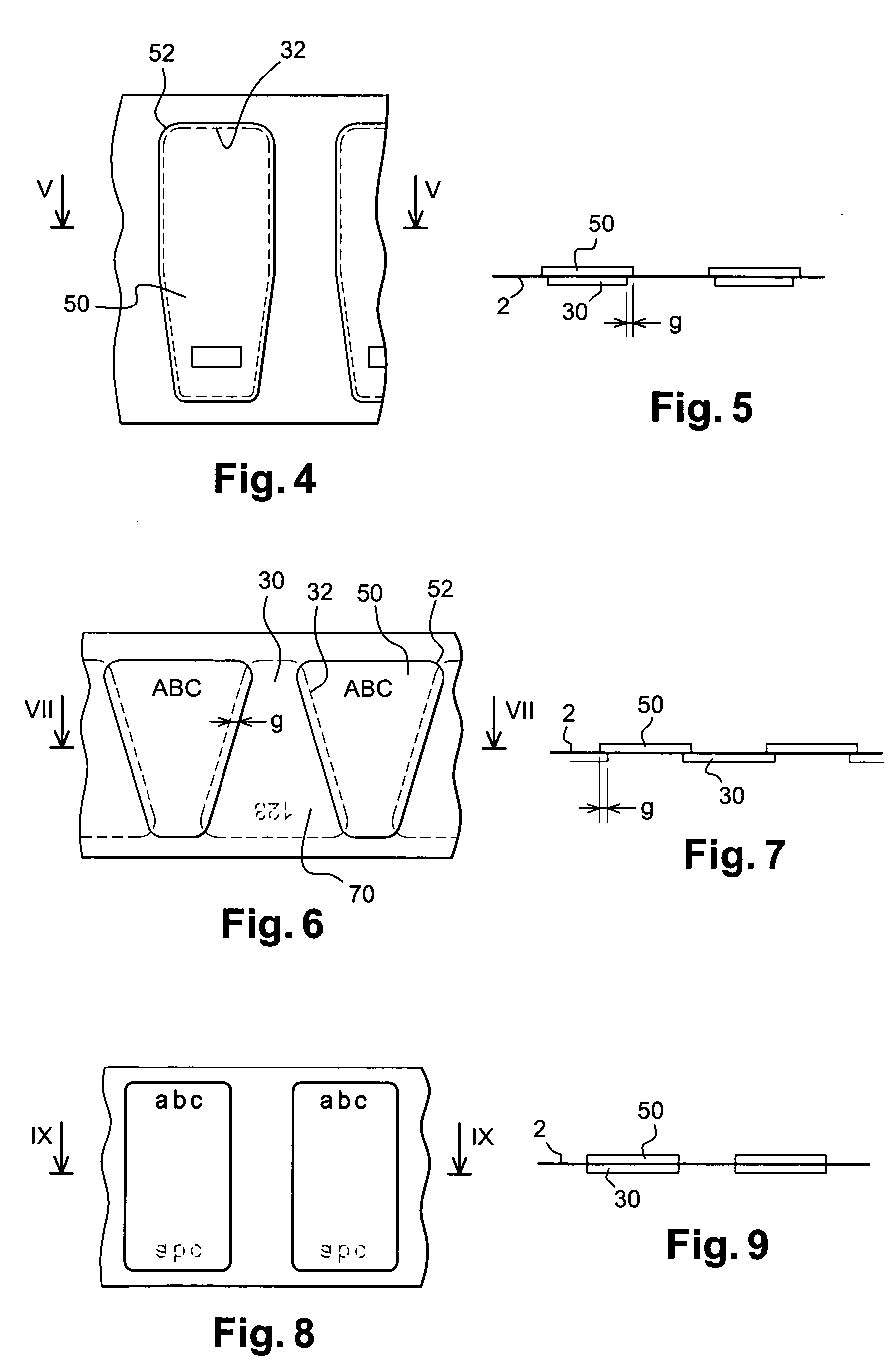Support provided with two series of labels
a technology of adhesive labels and supports, applied in the field of support for adhesive labels, can solve the problems of high product deemed defective, high cost of polyethylene terephthalate recycling, and high cost of production, and achieves simple surface treatment, good impermeability, and good stability in contact.
- Summary
- Abstract
- Description
- Claims
- Application Information
AI Technical Summary
Benefits of technology
Problems solved by technology
Method used
Image
Examples
Embodiment Construction
[0054]FIG. 1 shows an example of a support 1 according to the invention. This support 1 includes a support tape 2 with a thickness 3 of about 50 μm, for example. This support tape is coated on each of its faces with a layer 4 of a non-stick material, for example a layer of silicone with a thickness 5, for example, of about 1 μm.
[0055] A first film 6 is placed on a first side of the support tape 2 and is retained thereon by means of a first adhesive layer 7. A second film 8 is placed on a second side, opposite the first side, and is retained by means of a second adhesive layer 9 on this support tape 2. The adhesive layers 7 and 9 may be identical.
[0056] According to the invention, the films can be obtained by coextrusion of at least two layers of different thermoplastics. In the example shown in FIG. 1, the films 6 and 8 each include two layers. However, while still remaining within the scope of the present invention, the films 6 and 8 may comprise different numbers of layers.
[005...
PUM
| Property | Measurement | Unit |
|---|---|---|
| thickness | aaaaa | aaaaa |
| thickness | aaaaa | aaaaa |
| thickness | aaaaa | aaaaa |
Abstract
Description
Claims
Application Information
 Login to View More
Login to View More - R&D
- Intellectual Property
- Life Sciences
- Materials
- Tech Scout
- Unparalleled Data Quality
- Higher Quality Content
- 60% Fewer Hallucinations
Browse by: Latest US Patents, China's latest patents, Technical Efficacy Thesaurus, Application Domain, Technology Topic, Popular Technical Reports.
© 2025 PatSnap. All rights reserved.Legal|Privacy policy|Modern Slavery Act Transparency Statement|Sitemap|About US| Contact US: help@patsnap.com



